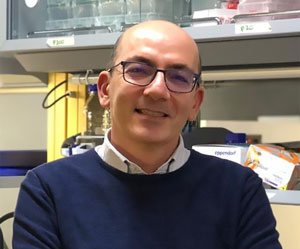(30 June 2022)
AUTHORS: Daniela Intartaglia1, Giuliana Giamundo1,2, Federica Naso1, Edoardo Nusco1, Simona Di Giulio1, Francesco Giuseppe Salierno1, Elena Polishchuk1, and Ivan Conte1,2
1Telethon Institute of Genetics and Medicine, Pozzuoli, Italy, 2Department of Biology, University of Naples Federico II, Naples, Italy
This study was conducted with IRRF funds – Ivan Conte, PhD, Telethon Institute of Genetics and Medicine, Pozzuoli, Italy. Department of Biology, University of Naples Federico II, Naples, Italy.
‘Autophagy is a critical metabolic process that acts as a major self-digestion and recycling pathway contributing to maintain cellular homeostasis. An emerging field of research supports the therapeutic modulation of autophagy for treating human neurodegenerative disorders, in which toxic aggregates are accumulated in neurons. Our previous study identified Ezrin protein as an inhibitor of autophagy and lysosomal functions in the retina; thus, in turn, identifying it as a potential pharmacological target for increasing retinal cell clearance to treat inherited retinal dystrophies in which misfolded proteins have accumulated. This study aimed to verify the therapeutic inhibition of Ezrin to induce clearance of toxic aggregates in a mouse model for a dominant form of retinitis pigmentosa (i.e., RHOP23H/+). We found that daily inhibition of Ezrin significantly decreased the accumulation of misfolded RHOP23H aggregates. Remarkably, induction of autophagy, by a drug-mediated pulsatile inhibition of Ezrin, promoted the lysosomal clearance of disease-linked RHOP23H aggregates. This was accompanied with a reduction of endoplasmic reticulum (ER)-stress, robust decrease of photoreceptors’ cell death, amelioration in both retinal morphology and function culminating in a better preservation of vision. Our study opens new perspectives for a pulsatile pharmacological induction of autophagy as a mutation-independent therapy paving the way toward a more effective therapeutic strategy to treat these devastating retinal disorders due to an accumulation of intracellular toxic aggregates.’
To access this article click HERE.
